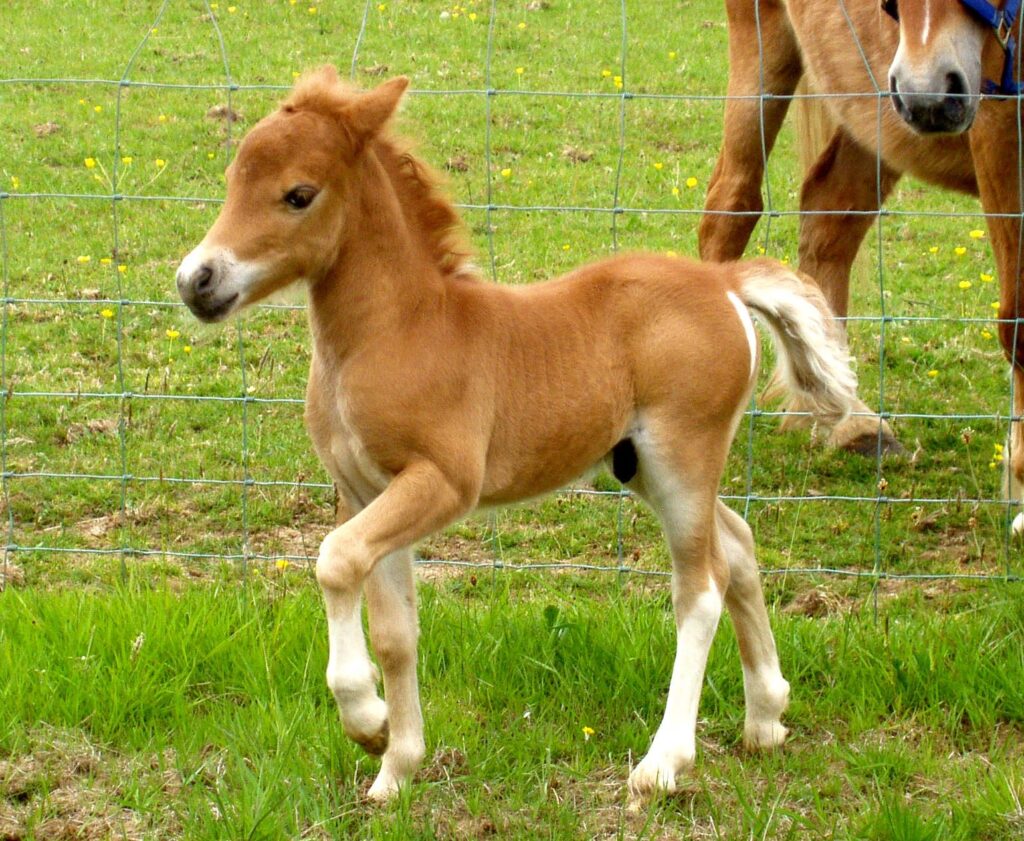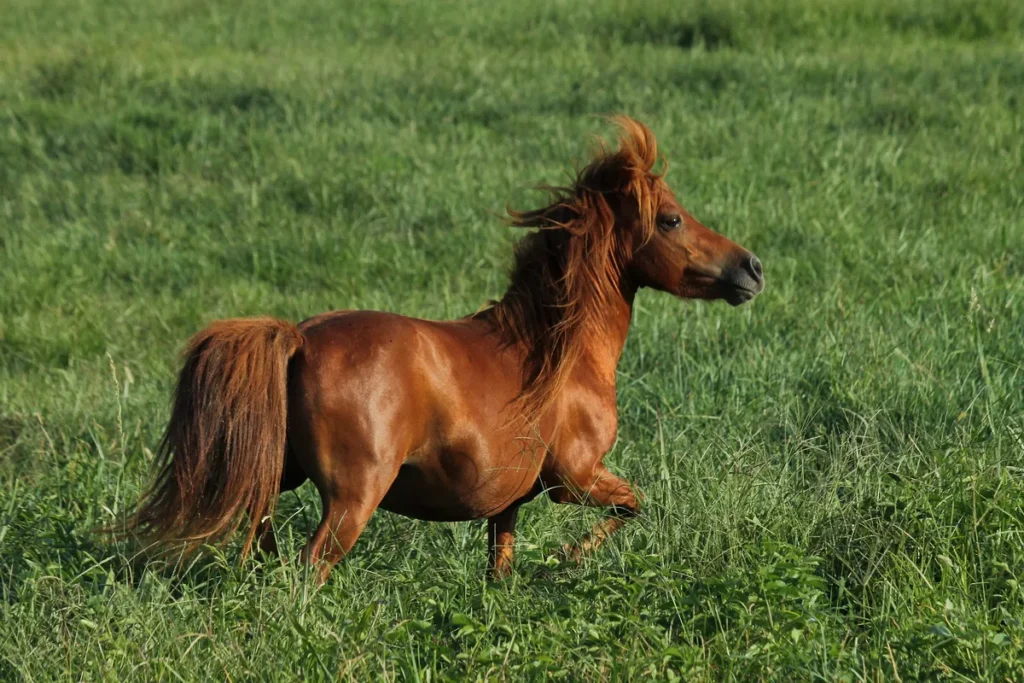Table of Contents
ToggleIntroduction

Welcoming new life into the world is a profound and enchanting experience. When it comes to foaling miniature horses, the journey is one of delicate care, anticipation, and the promise of new beginnings. The birth of a miniature foal, with its inherent charm and diminutive size, is a captivating event that captivates the hearts of equine enthusiasts. Foaling Miniature Horses? Foaling, the process of giving birth, is a pivotal moment in the life cycle of miniature horses, demanding the watchful eyes and nurturing hands of caretakers. In this exploration of foaling miniature horses, we delve into the intricacies of preparing for and guiding these precious arrivals into a world that awaits them with curiosity and care.
Preparing For Foaling
The anticipation of a miniature horse foal’s arrival brings with it a flurry of excitement and responsibility. Adequate preparation for foaling is essential to ensure the well-being of both the mare and her newborn.
Recognizing Signs of Impending Foaling
Observing the subtle cues that signal the onset of foaling is a skill every caretaker must hone. These signs include changes in the mare’s behavior, such as restlessness, frequent lying down and getting up, and increased tail movement. Physical changes, such as the relaxation of the vulva and udder enlargement, are also indicative of impending foaling. Diligent observation allows caretakers to intervene promptly or seek veterinary assistance when needed.
Creating a Comfortable and Safe Foaling Environment
The foaling environment plays a crucial role in ensuring a smooth and stress-free birthing process. Providing a clean, well-bedded foaling stall in a quiet and secluded area allows the mare to foal in a secure and private space. Adequate lighting is essential for nighttime foaling observations. The overall aim is to create an environment that minimizes external disruptions. It maximizes the mare’s comfort, promoting a sense of security during the vulnerable foaling moments.
Equipping a Foaling Kit with Necessary Supplies
A well-prepared foaling kit is a caretaker’s ally during the birthing process. Essentials include sterile gloves for sanitary assistance and lubricant for aiding in the passage of the foal. Iodine solution is used to disinfect the umbilical stump, and clean towels are used to dry the newborn. Additional supplies might include a flashlight for nighttime observations, a tail wrap to keep the mare’s tail clean, and a watch or timer to monitor the duration of the foaling process. Having this kit readily available ensures that caretakers can respond promptly to any complications or unexpected developments during foaling.
The Foaling Process
The foaling process is a remarkable journey that demands attentive observation, quick thinking, and a deep understanding of the mare’s natural behaviors. Breaking down the process into distinct stages helps caretakers navigate this pivotal moment with precision and care.
Stages of Labor and Delivery
Foaling occurs in three main stages. The first stage involves preparatory changes in the mare’s behavior and body. Including restlessness, sweating, and the breaking of the water sac. The second stage is the active delivery phase, where the foal is expelled from the mare’s uterus. The final stage is the passing of the placenta. Recognizing the signs of each stage is crucial for providing timely assistance and ensuring a safe delivery.
Monitoring the Mare’s Behavior and Vital Signs
Continuous monitoring of the mare’s behavior and vital signs is paramount during foaling. Changes in behavior, such as increased lying down and restlessness, signal the onset of labor. Additionally, monitoring vital signs, including heart rate and respiration, provides valuable insights into the mare’s well-being. Regular checks allow caretakers to intervene promptly if complications arise or if the mare requires assistance during any stage of the foaling process.
Assisting with the Foaling Process When Necessary
While most mares are capable of foaling without assistance, there are instances when human intervention becomes necessary. Caretakers must be prepared to step in if progress stalls or complications arise, such as a malpositioned foal or a delayed delivery. Gentle assistance, guided by veterinary advice when possible, may involve repositioning the foal or providing traction during delivery. This careful intervention ensures the safety of both the mare and the foal, fostering a positive start to their journey together.
Care For The Newborn Foal
The arrival of a miniature foal marks the culmination of months of anticipation and preparation. As caretakers witness the first moments of a foal’s life, providing immediate post-birth care. And establishing a nurturing environment becomes paramount for the health and well-being of both the foal and its dam.
Immediate Post-Birth Care and Interventions
In the tender moments following birth, caretakers initiate crucial care measures to ensure the foal’s smooth transition into the world. It includes clearing the foal’s airways of any mucus and ensuring proper breathing. Promptly dry the foal’s coat to prevent chilling. Administering iodine solution to the umbilical stump helps prevent infection. They are additionally, ensuring that the foal stands and nurses within the first few hours is vital for establishing a healthy start.
Ensuring Proper Bonding Between Mare and Foal
The bonding process between the mare and foal is a pivotal aspect of their relationship. Encouraging and facilitating this bond requires providing a calm and quiet environment that minimizes disruptions. Observing and allowing the mare to nuzzle, lick, and interact with the foal promotes a strong maternal bond. This initial connection lays the foundation for a trusting relationship between the miniature mare and her foal, fostering a sense of security and well-being.
Monitoring the Foal’s Health and Vital Signs
Vigilant monitoring of the foal’s health and vital signs is essential during the initial days of life. Regular checks on the foal’s temperature, heart rate, and respiratory rate help detect any potential health issues early on. Observing the foal’s behavior, including nursing frequency and mobility, provides insights into its overall well-being. Any deviations from normal behavior or signs of distress warrant prompt attention and, if necessary, consultation with a veterinarian.
Conclusion
The journey of foaling miniature horses is a testament to the marvel of life and the delicate balance between the miraculous and the practical. The birthing process, with its inherent beauty and intricacies. Marks is a pivotal chapter in the lives of miniature horse breeders and caretakers. As we’ve explored the preparation, anticipation, and care surrounding foaling, it becomes evident that this is not merely a physical event but a profound emotional experience.
The conclusion of the foaling process brings forth not only a new miniature foal but also a wave of responsibilities and joys. It signifies the beginning of a life filled with growth, companionship, and the unique bond between the miniature horse and its human caretakers. The watchful eyes, the sleepless nights, and the meticulous care provided during foaling culminate in the sight of a tiny, spirited foal exploring its world, embodying the essence of new beginnings.







